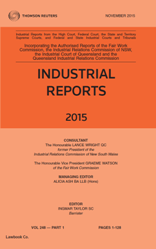
- US: General Motors strike50,000 workers at General Motors plants across America have been on strike since 15 September, demanding that the company restore the jobs, pay scales and conditions which they enjoyed before the company went bust in 2007. Federal government came to GM’s assistance in 2009.The auto workers’ union, the United Auto Workers, persuaded its members to let GM recruit new permanent workers earning half the pay of workers recruited before 2007, thereby allowing management to sow division in thework force. In the following years GM further diluted this already disunited work force with so-called “temporary” workers on even worse pay and conditions. These temps now amount to 7% of the workforce.
- The workers have been penalised in every direction as a result of UAW’s capitulation. Not only have they seen pay, conditions and job security hammered, they also have to pay the taxes which allowed the government to rescue the company in the first place, effectively paying twice over to prop up the company. Long after the company had returned to profitability – it made $35 billion in US sales alone in the last three years – it has continued to make workers redundant and close down plant, shipping off production to Mexico. The flashpoint for the current strike, the first UAW strike since 2007, has been the plan to close down the Detroit-Hamtramck plant. So far the strike has lasted a month, and at time of writing the workers are being balloted to determine whether to accept a new offer from GM. The proposed four-year deal appears to include some pay rises and an end to the two-tier pay scales. It seems that production would continue at Detroit-Hamtramck for the moment, but there is no undertaking to save three other idle plants. Workers should be wary of being taken for a ride again – the last one lasted for ten years. (Union says GM strike won’t end until workers vote on deal, Neal E. Boudette, New York Times, 17 October 2019)LINKShttps://www.nytimes.com/2019/10/17/business/gm-uaw.htmlRoyal Mail strike
- Royal Mail workers have voted by a landslide in favour of taking industrial action. 97% voted for action on a turnout of 76%. Since the privatisation of Royal Mail in 2015, postal workers have been subjected to increasing attacks on their conditions imposed by bullying management. By 2017 things had become so bad that workers voted overwhelmingly for strike action to halt this downward slide. But rather than act on this mandate, the CWU was persuaded to call off the action, instead signing up to the so-called “Four Pillars” agreement. This agreement made hopeful noises about pay rises, pensions and moves to reduce the working week from 39 hours to 35. Naturally in the small print all these promised improvements were made conditional on improvements in productivity (management speak for speed-up).Once the immediate threat of strike action was removed, management proceeded to renege on their side of the agreement. The CEO who signed the deal, Moya Greene, was replaced by Rico Back, who picked up a £6 million “golden hello” for his trouble.
- Since his tenure began conditions have further deteriorated, with management bullying sparking numerous walk-outs. In addition Royal Mail is planning to hive off its Parcelforce operation in order to bring its employees’ conditions down to the level suffered at the hands of companies like Hermes and DPD. Even under current arrangements Parcelforce drivers’ conditions are appalling, with some charged £250 a day if they go sick.So once again CWU members have handed their leadership a cast-iron strike mandate. It remains to be seen what the CWU plans to do with it this time. The true level of unemployment A study by the OSCE and the Centre for Cities reveals that the true level of unemployment in Britain is not the official figure of 1.3 million usually quoted, but rather nearly 4.5 million. The difference between these two figures is explained by the government’s practice of excluding from jobless figures a host of adults who are classified separately as “economically inactive”. This anodyne phrase encompasses people who are willing to work but not registered as jobless, people who have stopped looking for work on economic grounds, disabled people who could be working if the
- necessary support were available, people obliged by the lack of care facilities to leave the labour market and care for relatives, and people who have taken early retirement. That figure of 4.5 million unemployed is for the whole of Britain, but that picture breaks down unevenly across the country. If you live in Oxford or Exeter, even with the “economically inactive” included, there are less than 5% unemployed. But if you live in Liverpool, for which the officially recognised jobless figure is a mere 5.8%, then the real percentage of unemployment stands at 19.8%. The figures for other big de-industrialised urban centres like Sunderland, Dundee and Birmingham reflect a similar level of jobless misery. These figures should be remembered next time an establishment economistis heard expressing bafflement that the low unemployment rate is not matched by higher wages, offending against the law of supply and demand within the labour market. There is no conundrum, just duff government arithmetic. (Unemployment figures should be 3m higher, says research, Richard Partington, Guardian, 17 October 2019)LINKShttps://www.theguardian.com/business/2019/oct/17/unemployment-figures-should-be-millions-higher-says-research



